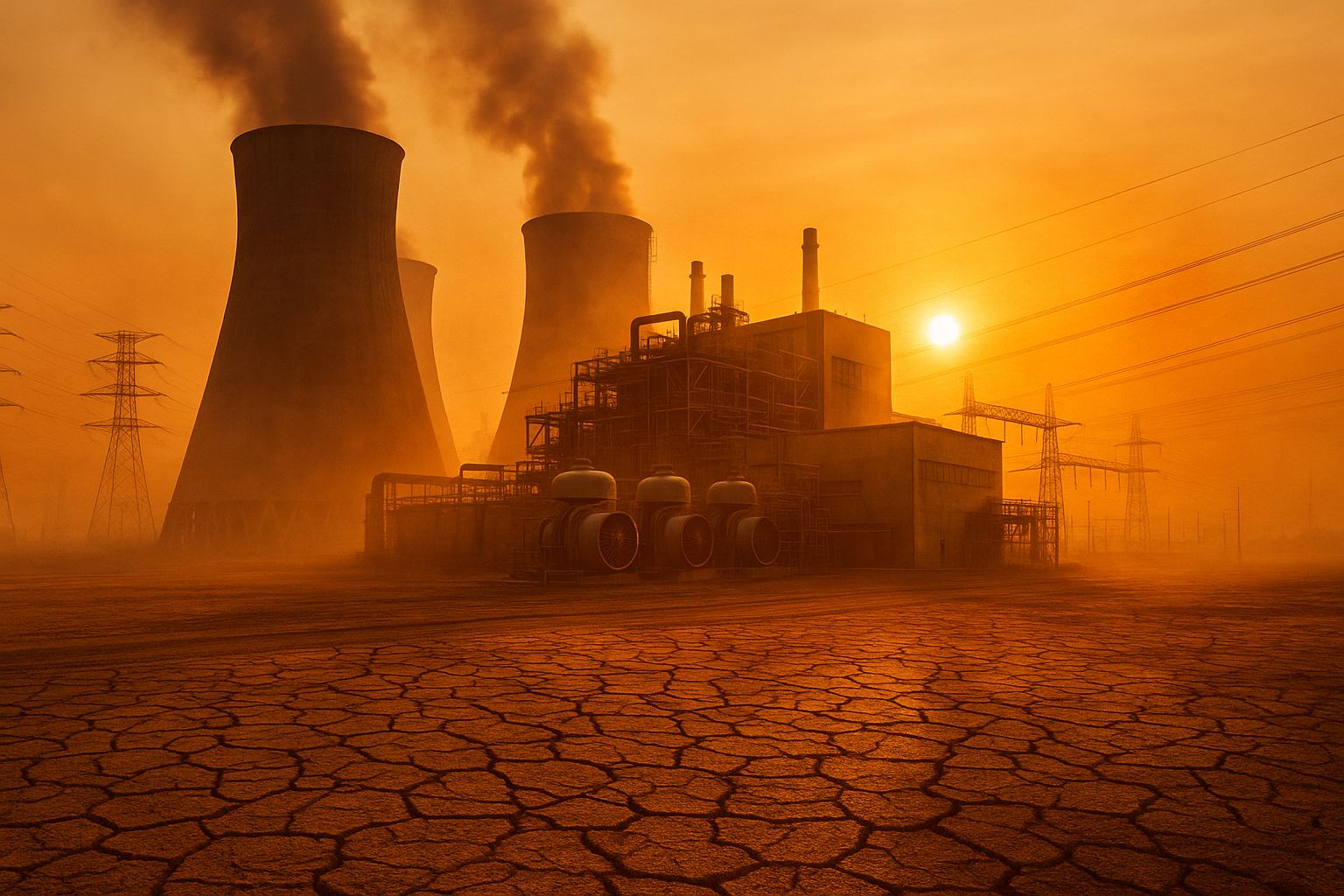- Green Glow
- Posts
- 🌱 How Climate Change Is Quietly Driving Up the Cost of Electricity💰🔥
🌱 How Climate Change Is Quietly Driving Up the Cost of Electricity💰🔥
Climate change is quietly raising electricity costs worldwide. Learn how extreme weather, grid upgrades, and rising demand are driving power prices beyond inflation — and what can be done to fix it.
Electricity bills are rising faster than inflation — and not just because of fuel prices or corporate greed. The hidden driver behind this steady surge lies in the changing climate itself. From stronger storms to growing energy demand, climate change is quietly reshaping the economics of power generation and distribution across the world.
Table of Contents

Extreme Weather Is Damaging the Power Grid
Climate-related disasters such as wildfires, hurricanes, floods, and heatwaves are wreaking havoc on the electrical grid. Each event damages power lines, transformers, and substations — infrastructure that’s already aging and expensive to maintain.
Utilities are being forced to rebuild and reinforce their systems to withstand future climate extremes. That means burying cables underground, replacing wooden poles with steel, and installing fire-resistant materials — all of which add billions in costs that ultimately appear on your monthly bill.
In Florida, for example, residents have seen electricity bills reach $400–$500 a month after utilities spent heavily to harden their grids against storms.
Heat Waves and Droughts Increase Power Demand
When temperatures climb, so does electricity use. Air conditioners and cooling systems run longer, pushing the grid to its limits. At the same time, droughts reduce hydropower output, while heat lowers the efficiency of solar panels and gas turbines.
The result is a double hit: lower supply and higher demand, which drive up wholesale energy prices. This trend has become especially visible during summer months, when record heat waves stretch across continents.

The Cost of Grid Modernization
Much of the world’s electricity infrastructure was built decades ago — long before climate change entered the conversation. Now, utilities must modernize these systems for a new reality:
Smart grids that can reroute power dynamically during disasters.
Battery storage systems to balance renewable generation.
Expanded transmission lines to connect wind and solar farms.
These upgrades require massive investment. In the U.S. alone, the Department of Energy estimates over $2 trillion will be needed to modernize the grid by 2050. Those costs don’t come from thin air — they’re being passed to consumers over time through rate hikes.
Data Centers and Electrification Are Fueling Demand
While climate change pushes utilities to spend more, new technologies are consuming more energy than ever. The explosion of AI data centers, electric vehicles, and battery manufacturing has created record-breaking demand for electricity.
Each large data center can use as much power as tens of thousands of homes, forcing utilities to expand grid capacity rapidly. When paired with climate-related reconstruction, this creates the perfect storm for rising electricity prices.
Electricity is becoming more expensive not just because it costs more to produce — but because it costs more to make it resilient. This is the hidden climate premium: the extra price we pay for protection against the very effects of a warming planet.
That premium shows up everywhere: higher insurance for utilities, expensive raw materials for transmission lines, and labor shortages after major disasters. Even as renewable energy becomes cheaper, the infrastructure to deliver it safely is becoming costlier.
What Can Be Done?
While climate change is making electricity more expensive, there are ways to reduce both costs and emissions:
Invest in decentralized renewable energy. Rooftop solar, microgrids, and community batteries reduce dependence on fragile long-distance infrastructure.
Increase energy efficiency. Upgrading appliances, using smart thermostats, and improving insulation can significantly cut household bills.
Encourage regulatory reform. Governments can design rate structures that protect vulnerable consumers and reward energy efficiency.
Adopt resilience-based planning. Building climate-ready infrastructure today will prevent far higher costs in the future.

Conclusion
Climate change isn’t just melting glaciers — it’s melting household budgets. As storms intensify, temperatures rise, and energy demand explodes, the cost of maintaining and protecting the power grid continues to climb.
The next time you open your electricity bill, remember: part of what you’re paying for isn’t just power — it’s protection from a changing planet.
FAQs
Why are electricity prices rising faster than inflation?
Because utilities are spending more to upgrade and protect aging power grids from climate-related damage while meeting rising demand from new technologies.
Does renewable energy make electricity cheaper?
Renewables reduce fuel costs in the long term, but connecting them to the grid and storing their energy safely adds infrastructure costs that can temporarily increase prices.
How does climate change directly impact the grid?
Extreme heat, storms, and wildfires damage infrastructure, shorten equipment lifespans, and force utilities to rebuild and harden their systems.
What can consumers do to lower their bills?
Use energy-efficient devices, install rooftop solar if possible, and advocate for smart-grid investments that reduce long-term costs.
You May Also Like
External Links
Follow Us:
X: https://www.x.com/greenglownews
Youtube: https://www.youtube.com/@greenglownews
Instagram: https://www.instagram.com/greenglownews
Sponsored Links